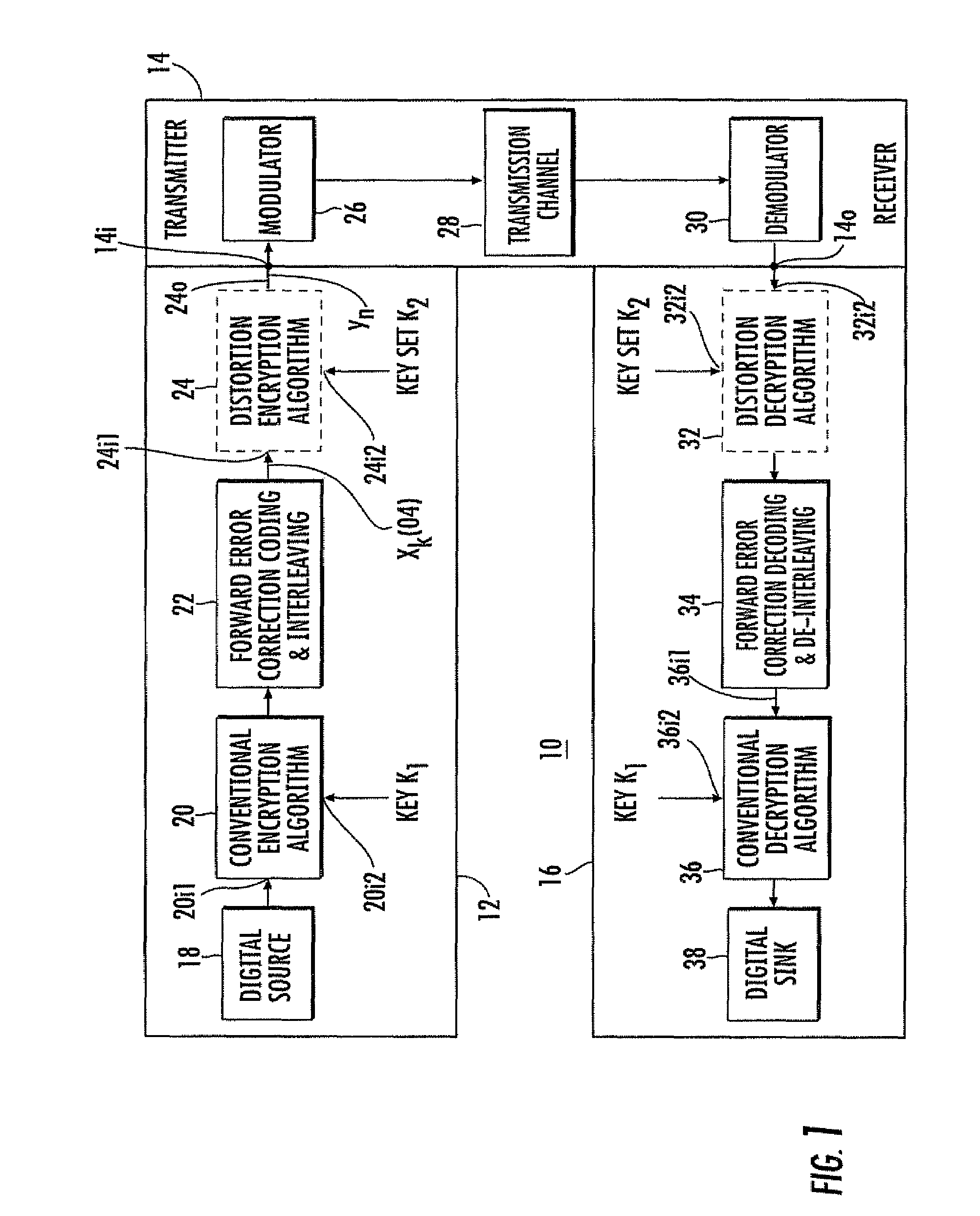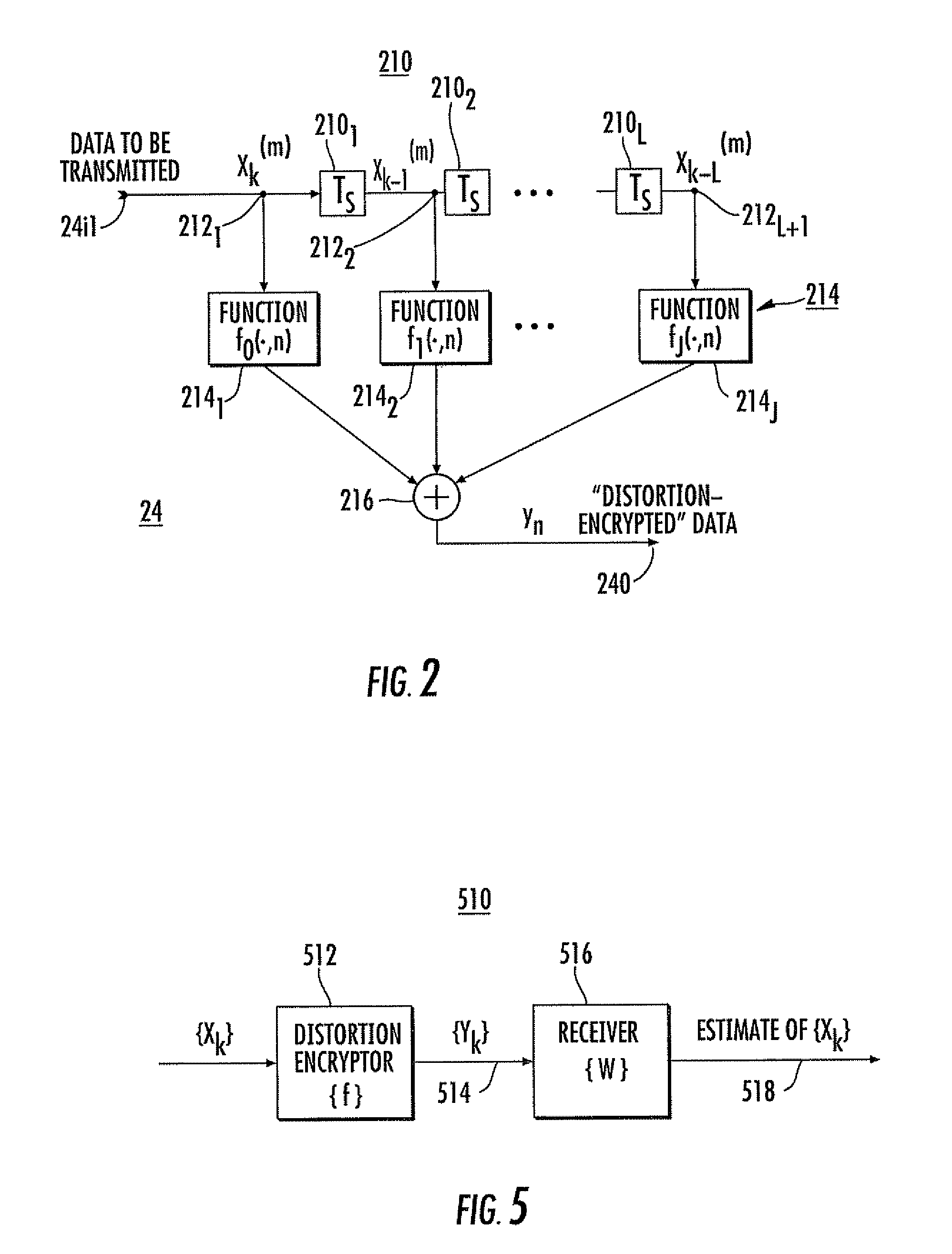Data encryption by nonlinear transfer function
a technology of nonlinear transfer and data encryption, applied in the field of encryption of digital data signals, can solve problems such as irregular “random-appearing” variation in amplitude of signals
- Summary
- Abstract
- Description
- Claims
- Application Information
AI Technical Summary
Problems solved by technology
Method used
Image
Examples
case number 2
[0040]Case number 2 of the table of FIG. 6 is for an unmatched Viterbi Algorithm decryptor in the situation in which an unauthorized decryptor might assume linear distortion, but does not know of the amplitude nonlinearity, in that it assumes that
[0041]f0(xk,k)=0.8xk and that f1(xk−1,k)=0.6xk−1,
[0042]with the application of channel coefficients w0=0.8 and w1=0.6. The coefficients used for the “unauthorized” receiver / decryptor in this case 2 were selected to equal the constant parts of the nonlinear functions employed in encryption, in order to more accurately model a real-world situation in which the constant parts might be correctly estimated. As set forth in the right column of the table of FIG. 6, PS has a value of 0.251 for this case, representing unusably high error in decrypting the encrypted signal {xk}.
case number 3
[0043]Case number 3 of the table of FIG. 6 is for a Viterbi Algorithm decryptor, in which the amplitude nonlinearity of the encrypting is similarly not recognized, but which uses the least-squares coefficients as determined over 100 symbols. The resulting error probability becomes 0.091, or almost 10%. Such a high error rate makes the Viterbi Algorithm decryptor relatively useless for generating a reliable estimate of the received symbols, even with coefficients selected on the basis of least-squares approximation with 100 known symbols. In the absence of the advantages of knowing the first 100 symbols, it seems unlikely that this decrypting scheme would be at all useful.
[0044]Cases 4, 5, and 6 of the table of FIG. 6 are for the situation in which the receiver 516 of FIG. 5 is a linear equalizer, which is less powerful for decrypting than the Viterbi Algorithms of cases 2 and 3. Case 4 is for a linear equalizer with three coefficients set equal to the least-squares estimates over 10...
PUM
 Login to View More
Login to View More Abstract
Description
Claims
Application Information
 Login to View More
Login to View More - R&D
- Intellectual Property
- Life Sciences
- Materials
- Tech Scout
- Unparalleled Data Quality
- Higher Quality Content
- 60% Fewer Hallucinations
Browse by: Latest US Patents, China's latest patents, Technical Efficacy Thesaurus, Application Domain, Technology Topic, Popular Technical Reports.
© 2025 PatSnap. All rights reserved.Legal|Privacy policy|Modern Slavery Act Transparency Statement|Sitemap|About US| Contact US: help@patsnap.com



